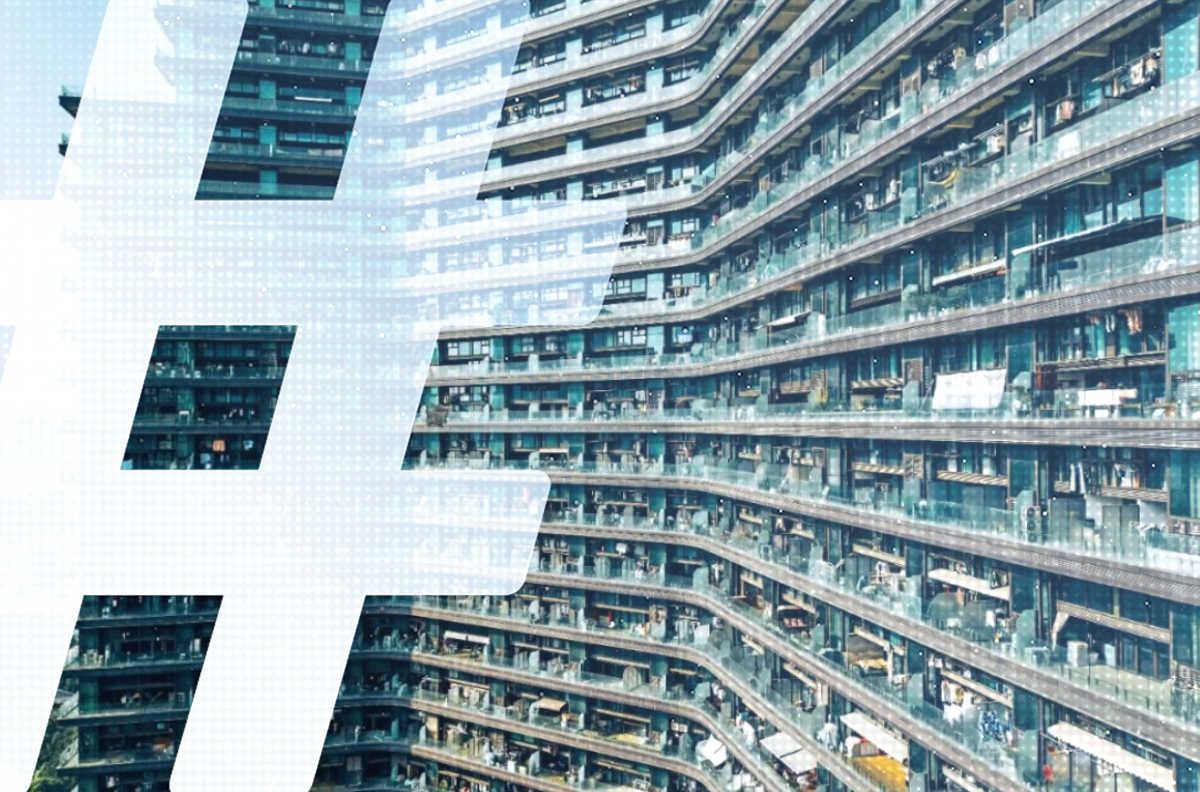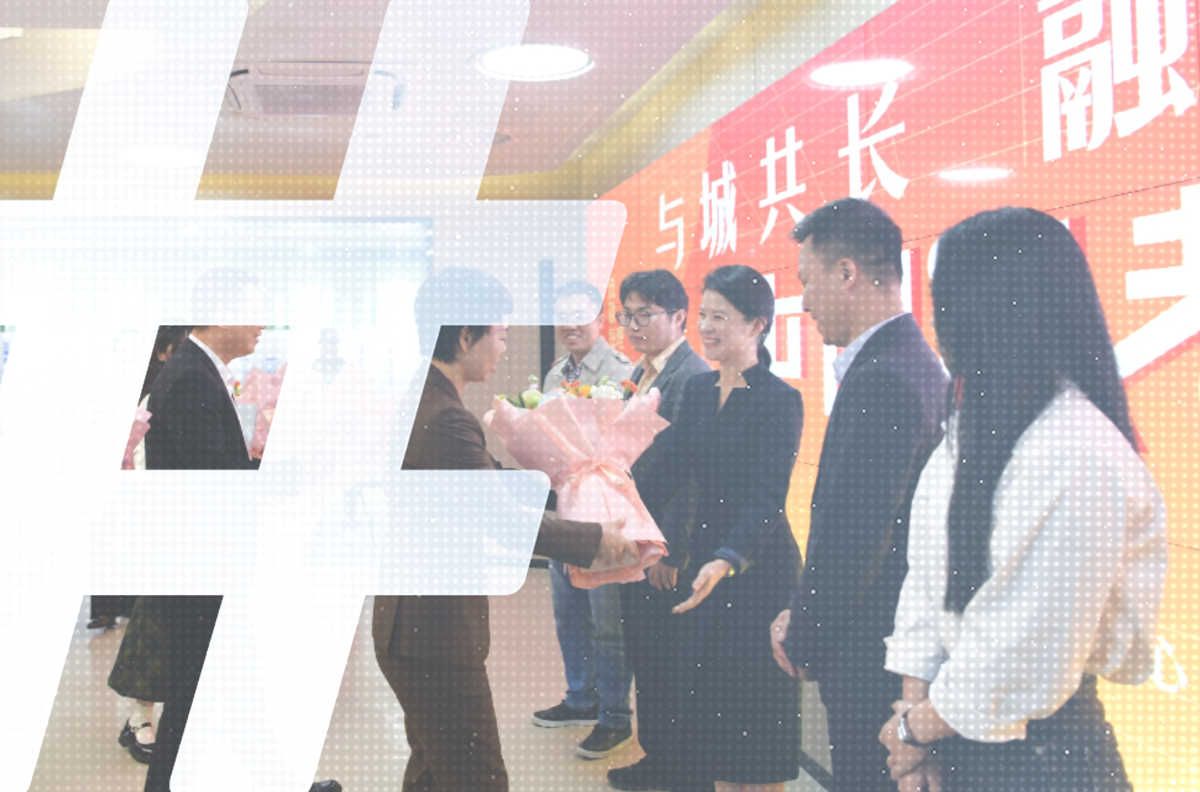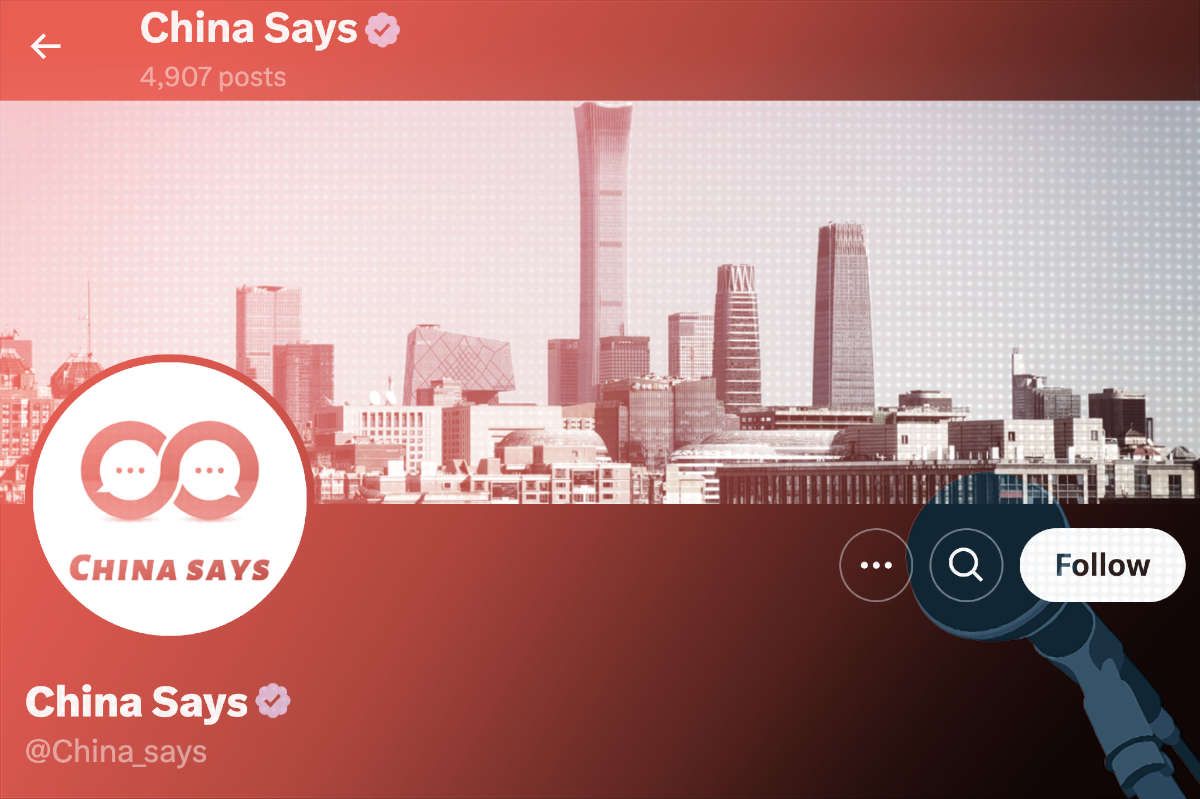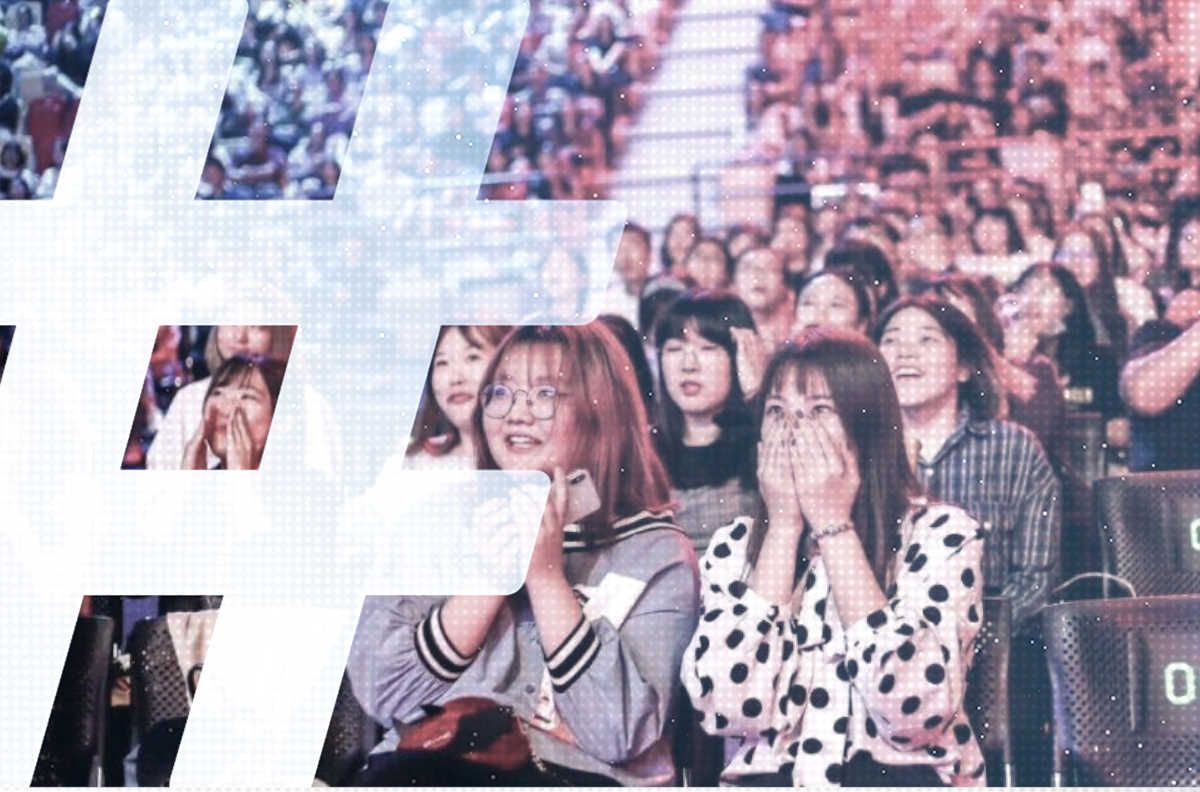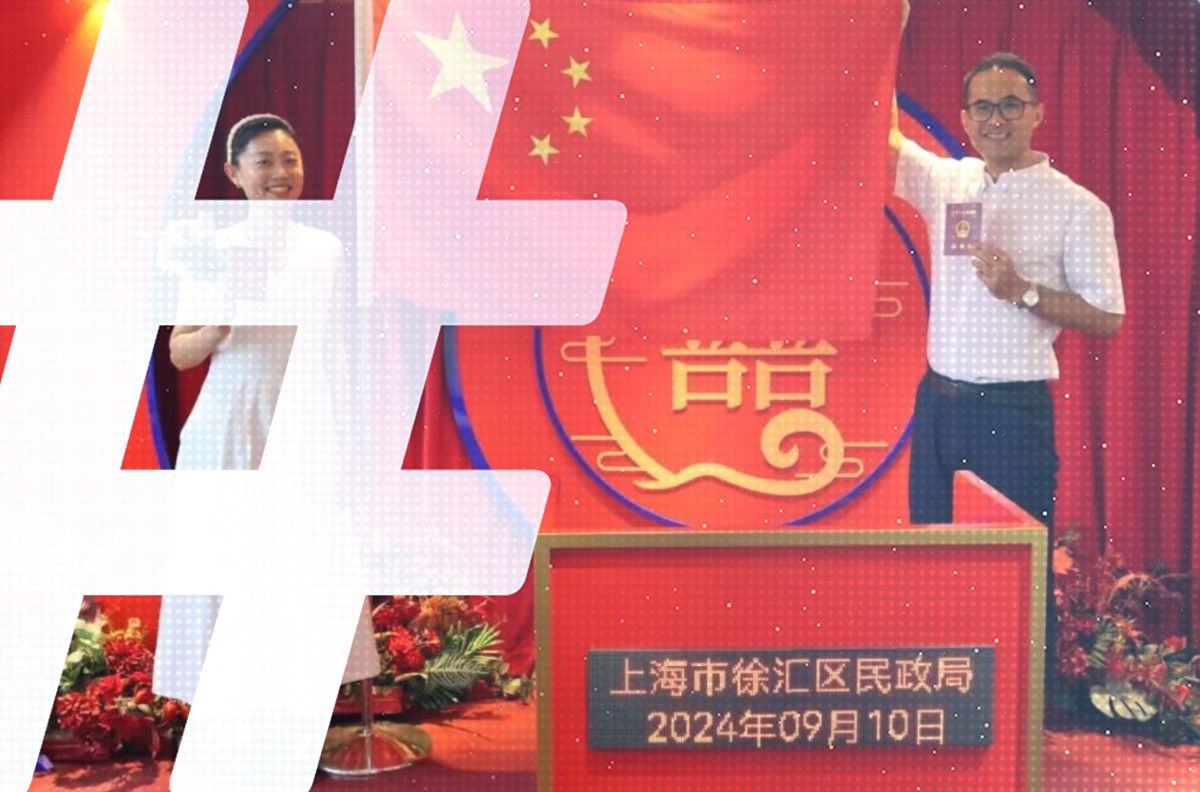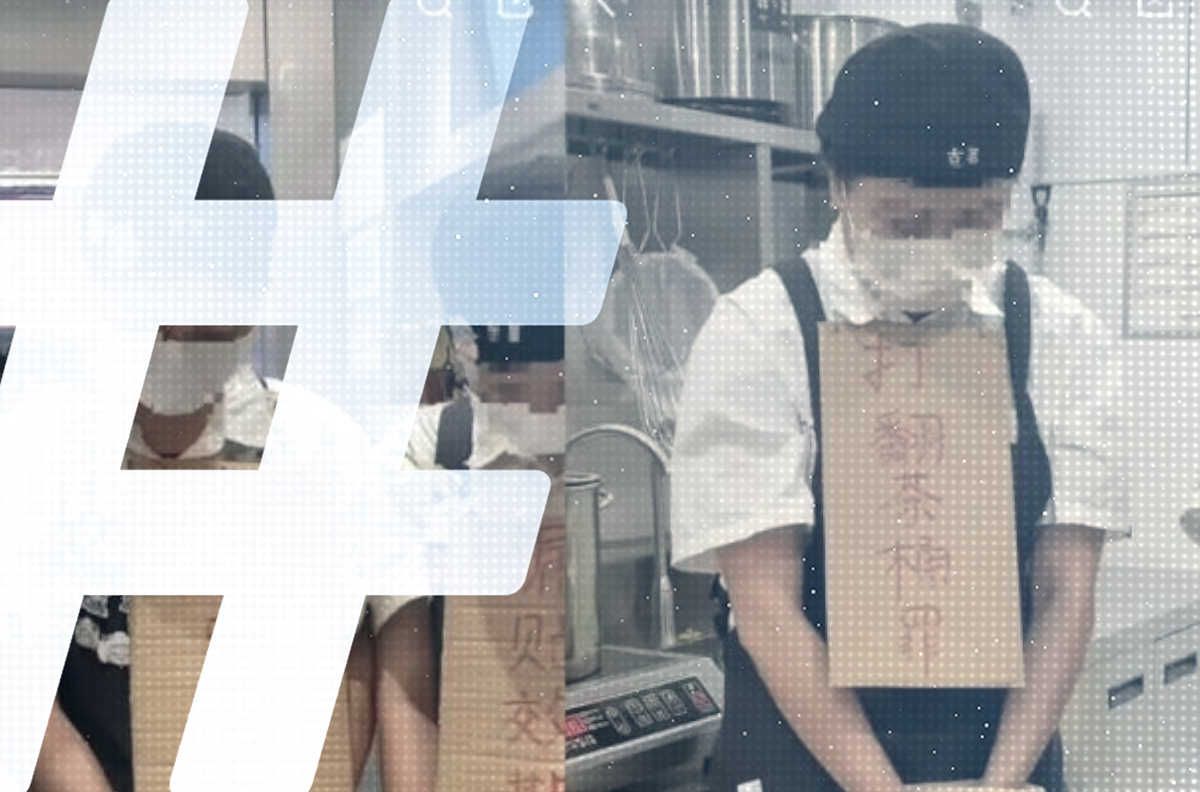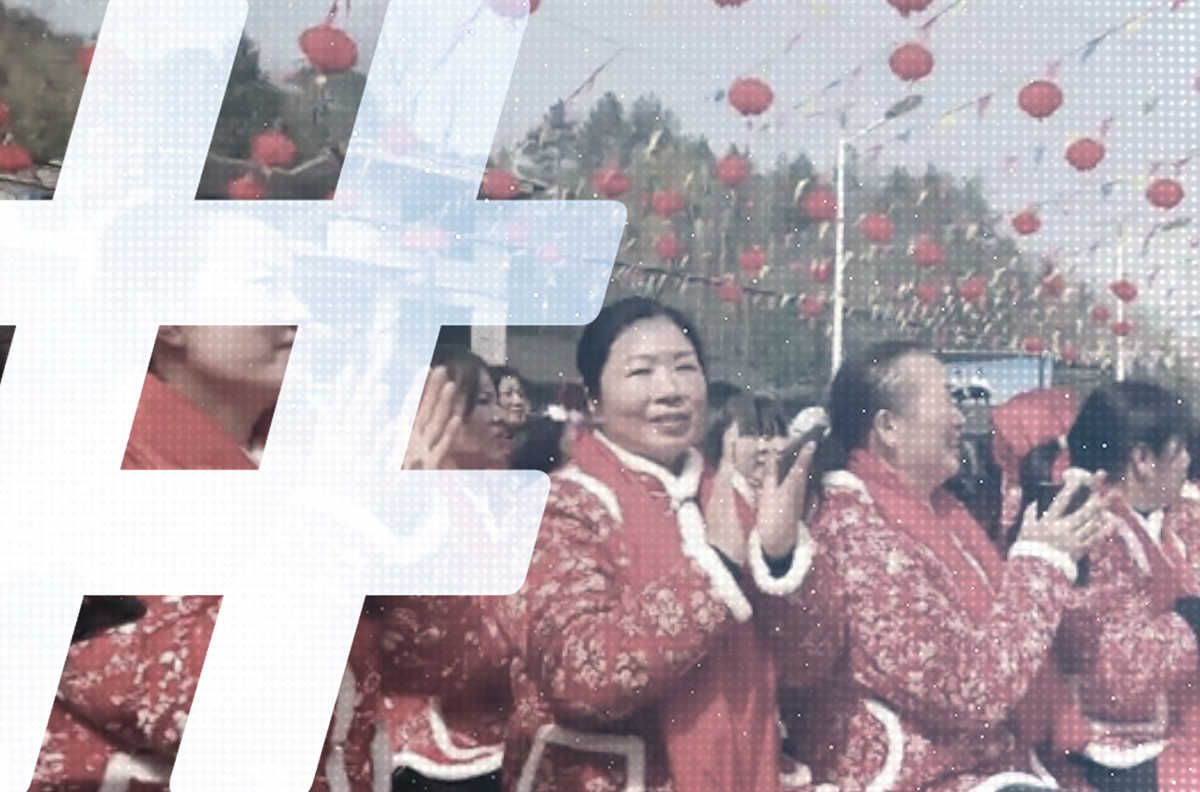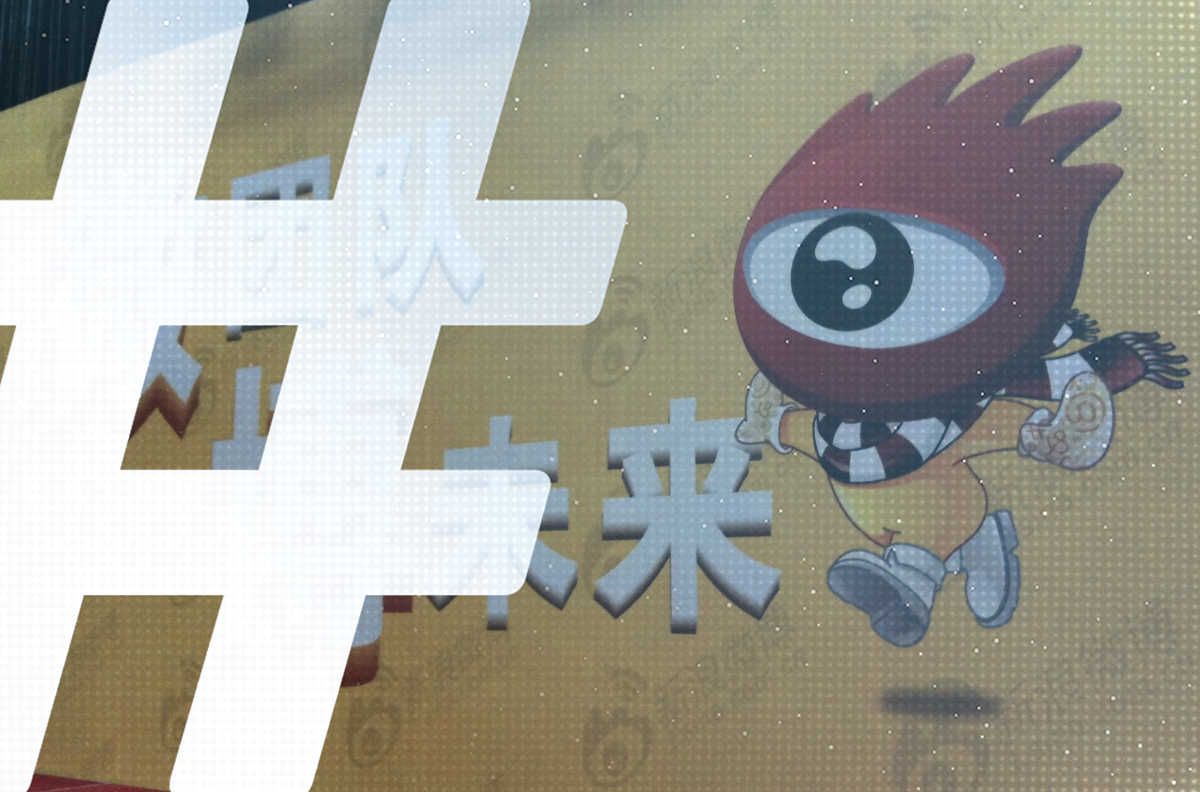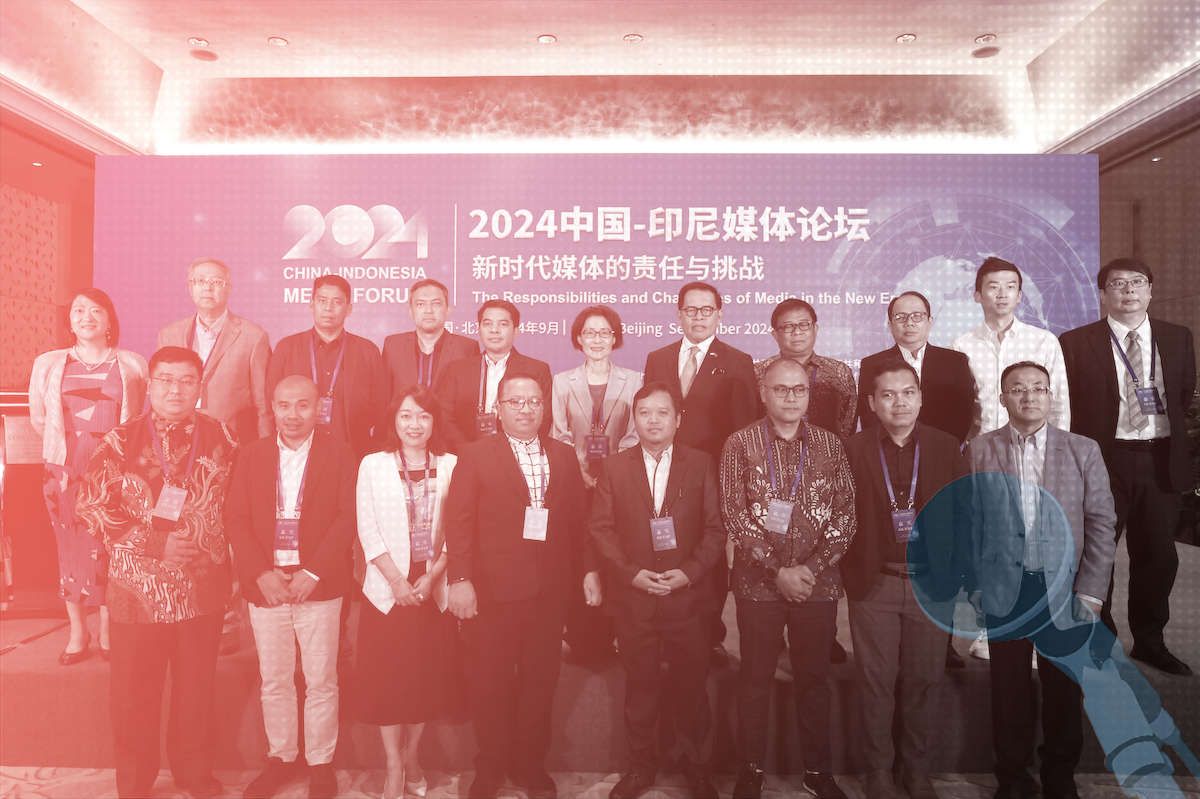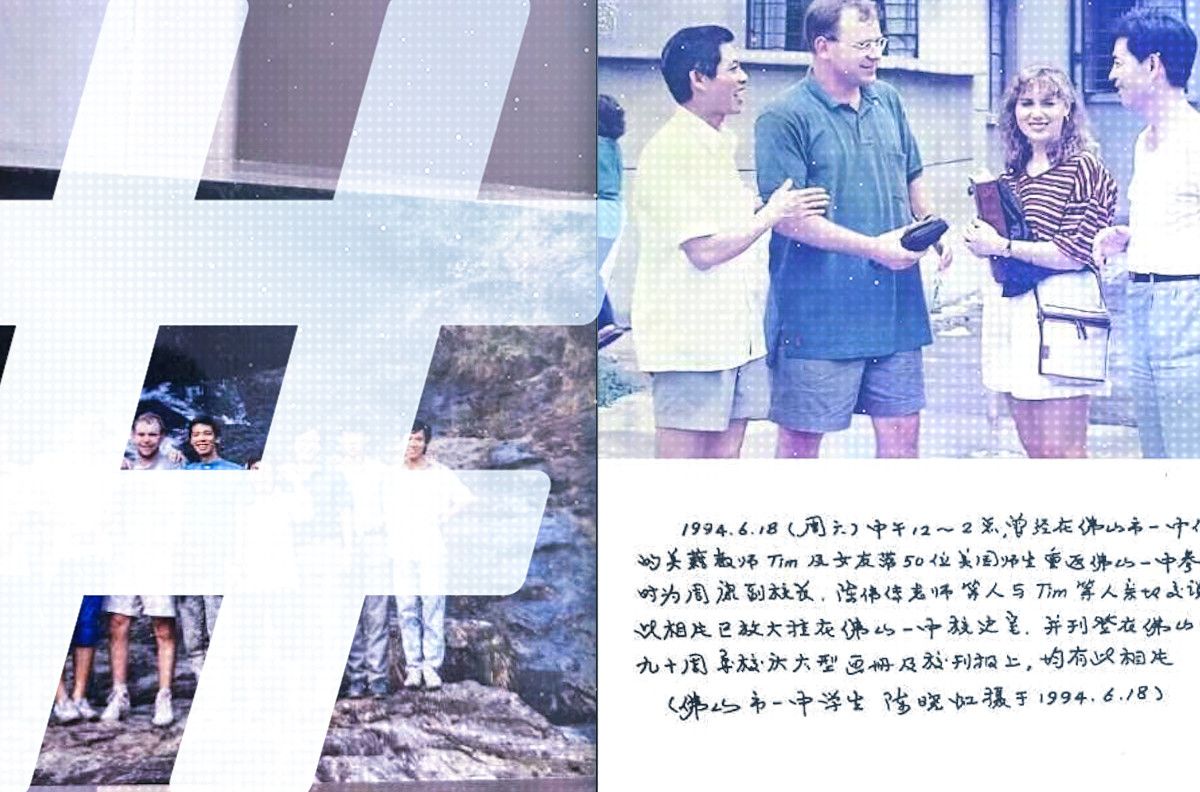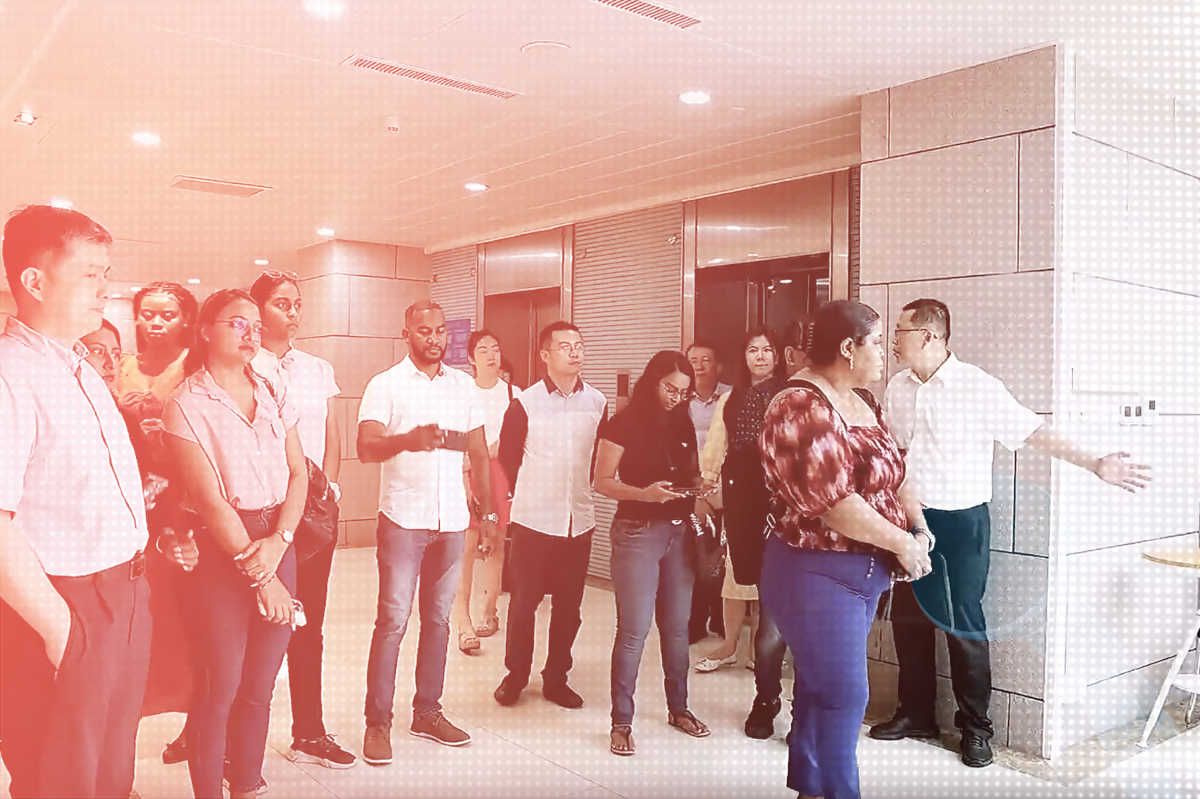
Mao Zedong reads the People’s Daily, the CCP’s flagship newspaper, in 1961. Public domain image available at Wikimedia Commons under CC license.
No one who knows the People’s Daily, the official newspaper of the Central Committee of the Chinese Communist Party, would turn through its pages expecting to find exclusive reporting on breaking stories, or to find incisive analysis. As the flag bearer of the top leadership, the paper points the way for all official media in following the Party line and achieving so-called “public opinion guidance.”
Over the past two months, however, as China has faced a health crisis of immense proportions, and as debate has raged over the role suppression of information played in the early stages of the coronavirus outbreak, the People’s Daily has managed astonishing feats of tone deafness, focusing on content so remote from public concerns that the result is a kind of dissonance that can only impact negatively on the Party’s image.
I’m talking specifically of the paper’s insistence on giving repeated prominence, even over major developments in the epidemic, to a special propaganda series called “The General Secretary Came to My Home” (总书记来过我的家). This series, with its feel-good reminiscences aggrandizing Xi Jinping as a man of the people, stands as a historical record of propaganda ugliness that cannot be whitewashed away.
Let us begin by backing up just a bit. We should remember that during the first 20 days of January, as the outbreak quietly raged, the People’s Daily reported not a single word about the crisis (which leaders had not yet properly recognized as such). It was only after Xi Jinping delivered his “important directions” (重要指示) concerning the epidemic on January 20 that coverage finally appeared on the front page of the next day’s edition. You can see an image of that page below. Look carefully at how the newspaper has visualized the Party’s priorities.
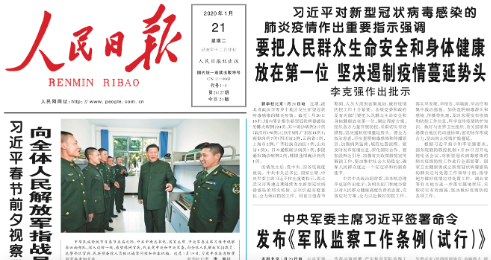
The news of Xi’s instructions on the epidemic appear on the right-hand side, next to the masthead, in the small space we refer to as the “newspaper eye,” or baoyan (报眼). But the news that gets the greatest emphasis, with a larger headline and a prominent image, is below the masthead, about Xi Jinping meeting with People’s Liberation Army soldiers during an inspection tour.
One might expect this sort of downplaying and sidelining of the epidemic to fade as the full seriousness sinks in for the Party leadership. But this is not in fact what happened.
From January 22 to January 25, for four straight days, the People’s Daily again had no front pages dealing with the epidemic. It was only on January 26, with the news that the Politburo Standing Committee had held a meeting on the epidemic, that related news took the most prominent position in the newspaper.
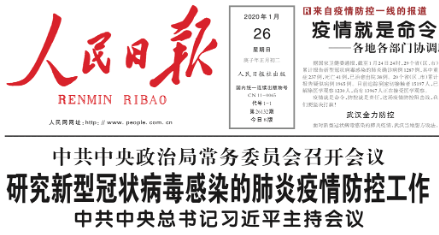
At this point, we might expect news and announcements on the epidemic to remain in primary position. After all, there was no doubt whatsoever by January 26 that the coronavirus was the most urgent and important matter for the country, that it would take long and concerted effort to deal with, and that it was the focus of public concern.
Generally speaking, when we the announcement of a major Party meeting on a crucial matter of policy or emergency, as we have in the front page above, we can anticipate the next day’s front page in the People’s Daily. One a central command (中央号令) has been issued by the Party leadership, it should lead in all official media, taking precedence over all other stories. In the People’s Daily, that would mean placement under the masthead, with a bold headline.
But is this what happened on January 27, the day after the meeting? No, in fact.
Here is the January 27 edition of the People’s Daily, on which news of the Politburo meeting and other news related to the epidemic appears on the right-hand side, again in the “eye” and the space below, with slightly smaller headlines than the main story. The main story, as the reader may guess, was something entirely unrelated – the pre-planned special series, “The General Secretary Came to My Home.”
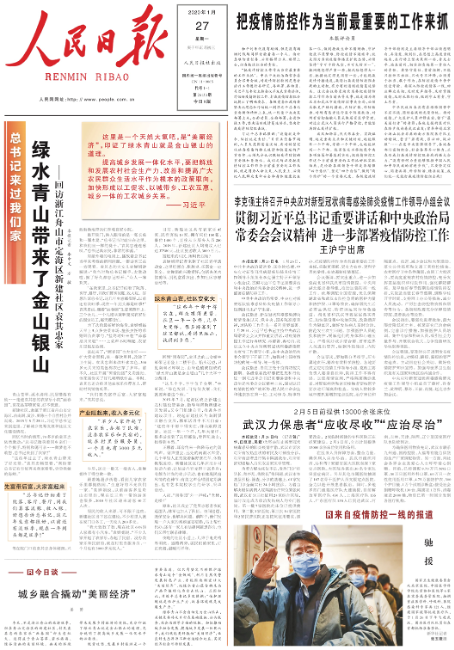
By this point, the special series was nothing new. It had been running through January as the epidemic quietly raged in Wuhan. The first article in this series actually appeared on January 5, and there were five front pages dominated by the series up to January 20, the day that marked a key turning point in the epidemic with Xi Jinping’s first major statement on China’s response.
From a purely design standpoint, the series is unappealing. Every installment is designed in exactly the same way, with the series title against an orange banner, a bold vertical headline, and a gold-shaded box at the top including an inspirational quote from Xi. The series is pushed so densely and regularly it seems it can only fatigue the reader. But of course the more serious problem is that the series has little newsworthiness whatsoever – at a time when everyone knows there is plenty to report, plenty to talk about, plenty to decide and act upon.
“The General Secretary Came to My Home” is a retrospective series in which journalists look back on Xi Jinping’s visits with ordinary Chinese in their homes since coming to office at the end of 2012, the most recent visit dating to September 2019. The “retrospective,” or huifang (回访), means going back and digging out old news coverage by the paper, so in this case the focus is on digging out the instances where Xi visited various homes, and then highlighting the aspects of this dealing with key propaganda points – particularly the theme of prosperity and the realization of “moderately wealthy lifestyles.”
Is this really news? If we allow that it is news, is this really news that people should be focusing on? Or, brushing aside these questions and looking just at the CCP members likely to pick up copies of the People’s Daily, we might ask: Is this the news that the 90 million members of the CCP most care about at this moment?
If we look at the priorities of China’s leaders over past weeks, to say nothing of the crisis that has engulfed all Chinese, we know that the obvious answer is that the epidemic is what everyone cares about. Since January, the Politburo Standing Committee has held three meetings to deal with the epidemic – on January 25, February 3 and February 12. Even if nothing else did, this would tell us all too clearly that the epidemic has become a serious crisis for the leadership. And not surprisingly, all three of these Politburo meetings made the front page of the People’s Daily. Xi Jinping’s various directives on the epidemic, his speeches and his inspection tours, were all given fairly prominent positions on the front page of the newspaper.
But through this entire period, as the whole country has been engulfed by the crisis, only one story has reigned supreme above all others in the People’s Daily: “The General Secretary Came to My Home.”
The following are the People’s Daily front pages from January 31, February 2, February 3, February 5, February 7, February 8, February 9, February 10, February 12, February 14, February 17 and February 18. All are dominated by virtually identical treatment of variations of the same story about home visit by Xi Jinping.
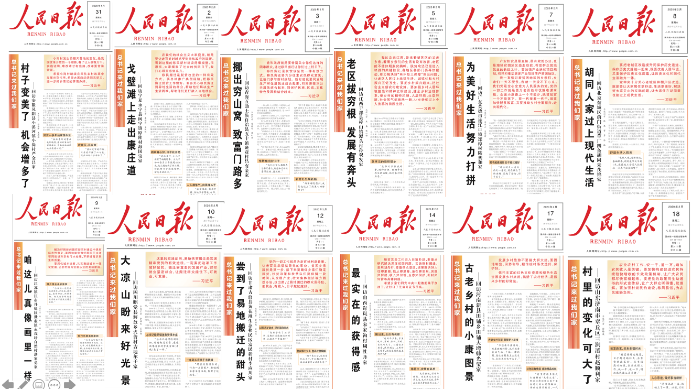
Let’s take a look at another, more recent, front page, from last Friday, February 21. Notice how this page, like all the other pages included above, are structured around the same series, “The General Secretary Came to My Home,” with identical treatment and layout on the front page of the newspaper.
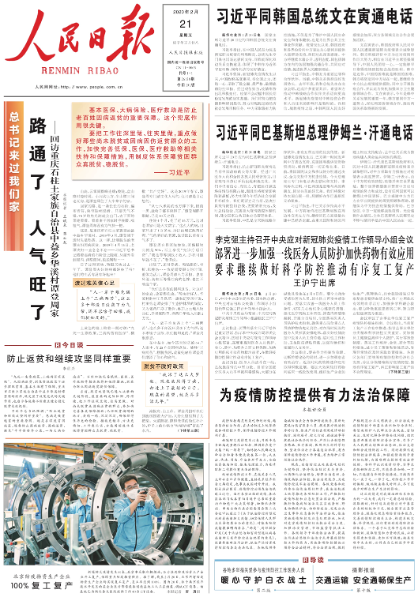
In the month since January 21, there have been 14 front pages dominated by the series, nearly one front page every other day.
Again, I would ask: Is this news? Do people care? But in fact, we don’t even need to judge these front page choices by the standards of journalistic professionalism. We can judge them instead on the basis of the mission and responsibility of the People’s Daily as defined by the CCP itself.
This series, “The General Secretary Came to My Home,” has clearly been in the works for some time. Very likely, the vast majority of these articles were written and prepared before the outbreak of the coronavirus. In my analysis of Party media coverage in January, I pointed out that 2020 has been defined as the year for China’s full realization of a “moderately wealthy society,” or xiaokang shehui (小康社会), and that this is a propaganda theme that Xi Jinping meant to trumpet loudly from the start of the year. The series on Xi Jinping’s home visits was clearly intended as a tribute to 2020 as the year of xiaokang achievement.
It’s not really important whether the families profiled in these stories from various regions in China are really representative of the lives of Chinese people (and all would undoubtedly have received special treatment and attention from local governments in preparation). The important takeaway of all the reports in the series is Xi Jinping’s presence, and his attentiveness to the needs and development of all Chinese. Careful preparation of this signature 2020 series was clearly a central political task of the Party media from late 2019.
The problem now is context. In the light of the present context, these propaganda reports appear ugly and callous.
Since the meeting of the Politburo took place on January 25, 2020, we have seen two very different Xi Jinping’s in the People’s Daily. The first is Xi Jinping personally leading the fight against the coronavirus epidemic, a crisis with a very tangible impact on people’s well-being and prosperity. The second is Xi Jinping busy harvesting the glorious results of xiaokang, and of China’s battle against poverty.
Since the official turnabout on January 20, when Xi Jinping signaled new public seriousness about the crisis, and throughout February, the epidemic situation in China has been extremely serious. The situation is now compounded by the economic impact of delays in getting people back to work after the Spring Festival, and so on. There can be no doubt that the overriding political task of the People’s Daily is to turn up the volume on propaganda about the leadership’s battle against the epidemic. We might suppose the paper would devote more headlines to the coronavirus epidemic given Xi’s emphasis on this as the Party’s “top task.”
So, let’s look at how the news was reported in the People’s Daily over a number of days, and what the newspaper’s front pages looked like.
The January 25 meeting of the Politburo Standing Committee decided to form a “central-level small leading group” on the response to the epidemic, and this “small leading group” was meant to provide unified direction of the epidemic response. On January 26, the head of the group, Premier Li Keqiang, led its first meeting, which quickly released an “important decision” (重要决策). Absent new instruction or activities by Xi Jinping to fight the epidemic, the news of the meeting led by Li Keqiang would be the undisputed choice for the top headline on the front page. The day after the meeting, however, news of the meeting was placed in the middle of the front page and to the right.
Which story gets top billing? Well, of course: “The General Secretary Came to My Home.” The moral of this particular article, which of course showcases Xi’s visit, is that sound environmental policies help to combat poverty.
This was not, however, a choice by the People’s Daily that we saw mirrored in other Party publications. The flagship newspaper was entirely unique in its choice of emphasis, and the situation was quite different in other Party newspapers. In the image below you can see the People’s Daily on the far left, with the Li Keqiang story at the middle-right, followed by Xinhua Daily, Hubei Daily and Liberation Daily. In all three of the latter cases, the Li Keqiang story is given precedence – not shoved aside by the home visit story. The news on the front pages of all three of these newspapers is dominated by reports about the coronavirus epidemic.
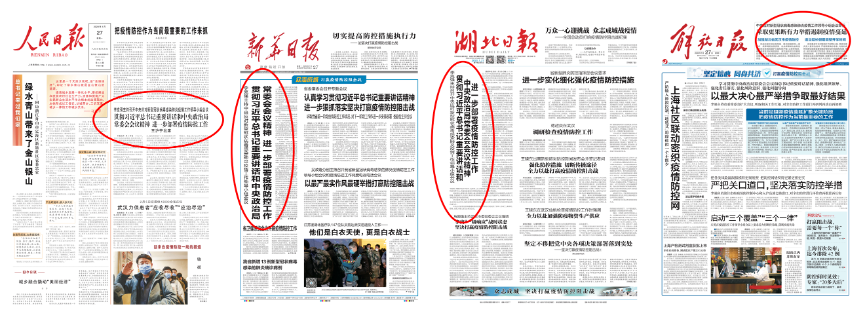
From the standpoint of CCP norms, this handling of the news by the People’s Daily should be hugely inappropriate. Here we have a small leading group that is serving at the Central Committee’s anti-epidemic command center. As head of the small leading group, Premier Li Keqiang is implementing the spirit of Xi Jinping’s directives on the epidemic from the Politburo Standing Committee meeting. How is this not the top story?
On January 30, Li Keqiang made an inspection tour of the Chinese Center for Disease Control and Prevention (CCDC), issuing instructions on a range of areas from investigating the origin of the outbreak to stepping of vaccine development and improving diagnosis and treatment. The importance of these instructions goes without saying, and the People’s Daily should have an obligation to put this news in the most important position. But in the next day’s edition of the newspaper, this story once again is placed in the middle of the right-hand side. Which story gets top billing? You guessed it: “The General Secretary Came to My Home.” The story focuses on Xi’s visit, with a subtext about agricultural reforms.
On February 1, Li Keqiang made another important inspection tour of epidemic response facilities. The news again appeared in the middle of the right-hand side. The lead story was another in the home visit series, this time about a family visited by Xi Jinping that had been relocated due to ecological reasons, but was now doing well, the youngest son buying a car, and the oldest now earning a salary of 6,000 yuan a month – solidly xiaokang.
On February 2, there were two important news stories. The first was the opening of a new hospital in Wuhan with 1,400 military medical staff. The second was Li Keqiang’s leading of another meeting of the small leading group on increasing material support for prevention and treatment. The next day, the People’s Daily put the first story in the “eye” at the upper right-hand corner of the front page, and the second on the right-hand side below. The story given the most prominent treatment, however, was again about Xi Jinping and part of the home visits series. It was about a family that became rich after opening a brewery.
On February 3, the small leading group held its third meeting, which dealt with measures to raise the level of treatments in Wuhan and lower infection rates. The story appeared on the right-hand side the next day. The main story that day? It was called, “Pulling Out the Roots of Poverty, Achieving Rapid Development,” yet another story in the series on home visits by General Secretary Xi Jinping. One choice line in the article said that “the general secretary has prioritized a toilet revolution,” this referring to a campaign to improve sanitary conditions.
On February 6, the small leading group issued orders on the orderly return of production and guaranteeing supplies – dealing, in other words, with getting China’s economy up and running. Once again, this story was slotted to the side in favor of “Work Hard for a Better Life,” a story in the home visits series on a child from the countryside who had managed to attend university.
The fifth meeting of the small leading group was held on February 13, Li Keqiang again presiding. This dealt with changes to disease classification, and with other measures for the effective prevention and control of the epidemic. The classification issue was related to the “policy precision” requested by Xi Jinping. It was again the most important CCP news of the moment. But neither this story, nor another news item about the army ordering another 2,400 medical personnel to Wuhan, could compete with the marquis story: “The General Secretary Came to My Home.”
As the Spring Festival holiday came to an end, the key priorities remained the response to the epidemic and the return of people to work. The small leading group held its 7th and 8th meetings on February 17 and February 20. But the top front-page headlines on the days following these meetings were virtual copies of previous front pages. Pride of position was given on February 18 to a report in the home visit series called “The Change in Our Village is Huge,” and on February 21 to a home visit report called “The Road is Open and the People are Flowing.” This latter report, which dealt with the health of ordinary people in China, quoted Xi Jinping’s statement that “basic medical insurance, critical illness insurance, and medical assistance are important guarantees to prevent ordinary people from returning to poverty due to illness.”
One wonders, if the health of the people was indeed the top priority, why was news of the epidemic not given more prominent positioning?
Throughout the period I just covered, the focus in provincial and local-level Party newspapers was consistently on the epidemic, the front pages dominated by central-level policies and directives, local decisions and actions, and reports from local reporters. From January 27 to February 22, Beijing Daily, the local mouthpiece of the Beijing city leadership, ran 11 of its own reports on the epidemic. During the same period, we can find unique reports in a number of other central-level publications as well: eight in China Youth Daily; 11 in the Economic Daily; 12 in Guangming Daily. In fact, the People’s Daily sent a rather sizable reporting team to the front lines in Wuhan. Between January 27 and January 22, the paper ran close to a hundred reports. And yet, only one of these made the newspaper’s front page.
The conclusion we come to when reading through the pages of the CCP’s official People’s Daily is that no news on the ongoing epidemic, whether this means the decisions of the leading small group, or reporting on the epidemic by the paper’s own reporters (though much of this “coverage” is of course actually propaganda lauding the actions of the leadership), is more important than the series of propaganda articles on Xi Jinping’s visits to people’s homes.
Reports on Li Keqiang at the People’s Daily also appear to have been restrained by unspoken rules. After the January 25 meeting of the Politburo Standing Committee, Li Keqiang traveled to Wuhan, arriving there on the 26th. This was a news story on which millions upon millions of people were focused. On January 27, the Beijing Evening Post, a commercial paper under Beijing Daily, placed this major news about Li Keqiang’s trip in the most prominent position on its front page, as did Hubei Daily, the official Party mouthpiece of Hubei province.
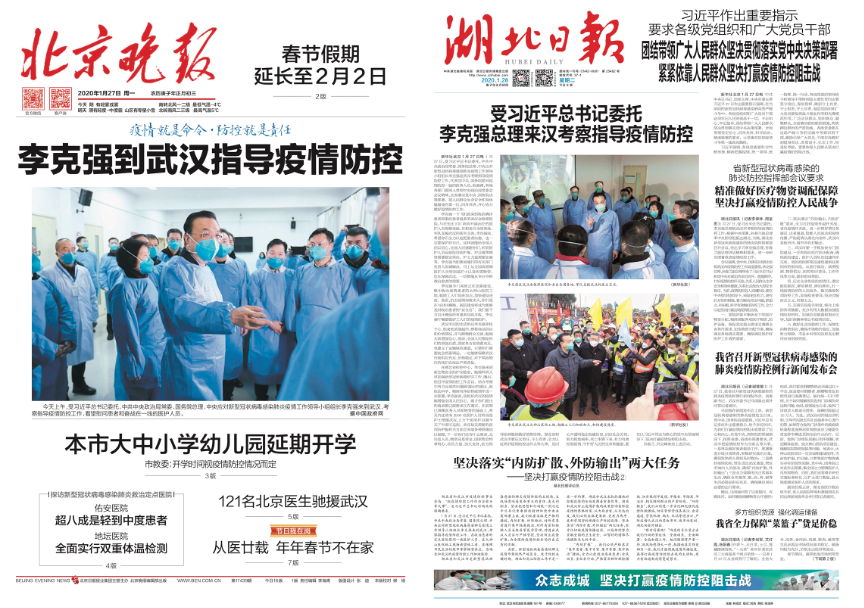
On the same day that Li Keqiang arrived in Wuhan, Xi Jinping issued another directive on the epidemic. His talk of “firming up confidence, helping one another, taking a scientific approach to prevention and control, and applying policy precisely” was actually a repeating of what had already been reported in the newspapers after the January 25 Standing Committee meeting. But as Xi cannot be surpassed in the People’s Daily headlines, the big news about the premier could only take second place – and the premier’s important visit in Hubei had to come with mention that he was “entrusted by General Secretary Xi Jinping.”
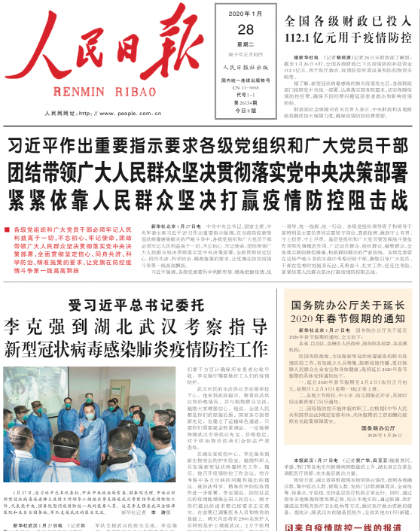
The arrangements we see on front pages like that on January 28 page above, such as the need to emphasize Xi Jinping first among Politburo Standing Committee members, are not decisions that can be made at the discretion of the editor-in-chief of the People’s Daily or his staff.
But the choices being made at the newspaper in regard to this series on the general secretary visiting people’s homes are incomprehensible to all – and perhaps even more so to those who understand how the Party’s approach to the news works. It’s difficult to imagine that this completely un-newsworthy series, so unsightly against the backdrop of the epidemic, is something Xi Jinping himself has insisted upon. After all, for weeks now as the country has faced a major health crisis, Xi Jinping has emphasized that “[we] must make the safety and physical health of the masses the top priority,” and that “[we] must define epidemic prevention and control as the most important work.”
Are the editors at the People’s Daily just not hearing it?
Of course we can’t be naïve in our expectations of the People’s Daily. Xi Jinping has stressed that the Party media “must be surnamed Party,” that they must serve the Party’s agenda alone. It would be unrealistic to imagine that the People’s Daily will simply change course and start doing investigative reporting, or look back critically on the handling of the epidemic. But at the very least, at such a difficult time, couldn’t the People’s Daily emphasize the epidemic, even if this only means shouting slogans?
For whatever reason, this has not been possible. “The General Secretary Came to My Home” has dominated 14 front pages of the People’s Daily in just over a month since January 25, with its tone triumphant and pleasant at turns, conveying a fulsome sense of happiness and gain. The tone deafness of the series is really quite incredible, treating Xi Jinping’s every step as a miracle.
Do the editors not understand that these choices will actually have an adverse impact on the image of the CCP and the image of Xi Jinping? Are they, to a fault, true believers? Are they simply confused?
I wish I knew the answer.
[Featured Image: A scanning electron microscope image of SARS-CoV-2, also known as 2019-nCoV, the virus that causes COVID-19. Image from NIAID available at Flickr.com under CC license.]

